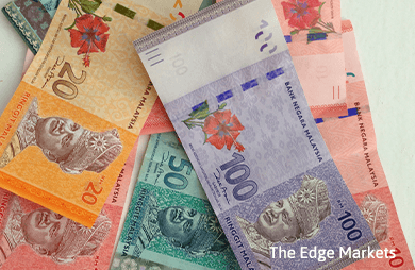
KUALA LUMPUR (Feb 8): Malaysia’s crackdown on currency speculators has come at a cost. While it has successfully reduced ringgit volatility, it is threatening to discourage overseas investors.
The central bank’s steps to curb trading in offshore non-deliverable forwards last year made it harder for global funds to hedge their exposure to Malaysia, according to Macquarie Bank Ltd. Global funds cut holdings of Malaysian debt by a combined RM25.2 billion (US$5.7 billion) in November and December, the biggest two months of outflows since 2008, central bank data show.
The difference between onshore and forward prices for the ringgit jumped to a record in November, spurring the central bank to crack down on NDF trading. Since then, the currency’s volatility has dwindled to the lowest in four years, while the ringgit slid to the weakest since 1998 even as oil prices stabilised and the central bank dismissed speculation it was about to impose capital controls.
“The initial imposition of the NDF restrictions did lead to talk of the potential of further restrictions and even capital account closure,” said Julian Wee, a senior market strategist at National Australia Bank in Singapore. “These sort of measures tend to lead to a loss of confidence in the market, which was already jittery. However, the overall direction and movement in the US dollar-ringgit has been due to the overall US dollar trend in addition to BNM’s inability to resist it.”
A measure of one-month volatility for the ringgit has tumbled since mid-November when the central bank warned foreign banks not to engage in NDF-related transactions, turning the currency into emerging Asia’s least volatile, from the most. Volatility dropped to 2.5% last week, the lowest since December 2012.
Development Needed
“While the foreign-exchange spot market liquidity has consistently been supportive and able to serve the needs of participants, forward market liquidity requires further development,” Bank Negara Malaysia said in a statement in response to questions from Bloomberg. “The recent liberalisation measures, both for domestic and foreign investors, will improve overall market liquidity over time.”
The ringgit has fallen 2.1% since Nov 15, the region’s worst performer after the yen, and reached 4.5002 per US dollar on Jan 4, the weakest since the Asian financial crisis. The currency was at 4.4373 as of 4:50pm in Kuala Lumpur on Tuesday.
Not everyone is pessimistic. United Overseas Bank Ltd predicts the ringgit will strengthen to 4.35 per US dollar by June 30 as it regains a positive correlation with crude oil. Oil-related products are Malaysia’s second-largest export.
“The ringgit’s previously high-beta or sensitivity to (US) dollar moves is clearly diminished,” said Peter Chia, a currency strategist at UOB in Singapore. “Factors in favor of a firmer ringgit include our estimated fair value of 3.90 and a return of the positive correlation to firmer oil prices.”
Bank Negara blamed the “opaque” offshore NDF market for worsening the pressure on the ringgit and said the currency’s pricing should never be disconnected from real economic activities in the onshore market.
Traders Wary
Traders remain wary even after central bank Governor Datuk Muhammad Ibrahim allowed for greater hedging flexibility in the onshore currency market in an attempt to discourage the use of NDFs. In measures that took effect in December, Bank Negara pledged to ensure there would be "continuous liquidity of foreign currency" in the onshore market, and placed a cap on the amount of export proceeds companies can hold in foreign currency.
The central bank said Tuesday 16 fund managers, including foreign companies, overseeing a total of RM46.8 billion had registered under its flexible hedging framework. Bank Negara has been engaging with international fund managers and industry associations to ensure smooth implementation of the initiatives to facilitate access to the onshore market, it said.
Malaysia’s dwindling foreign-exchange reserves mean it has less power to defend its currency. Reserves were US$95 billion at the end of January, down from as high as US$141.4 billion in May 2013. They have dropped in each of the past four years.
The ringgit is poised to end this year at 4.80 per US dollar, close to the record low of 4.8850 reached in January 1998, according to Nizam Idris, head of foreign-exchange and fixed-income strategy at Macquarie Bank Ltd in Singapore.
The NDF crackdown has done some harm for market players, he said. “While Bank Negara can say the onshore USD/MYR deliverable forward market could provide that hedge option, it is less liquid, certainly for after hours trades. The cost of hedging for foreign investors has definitely risen at the margin.”